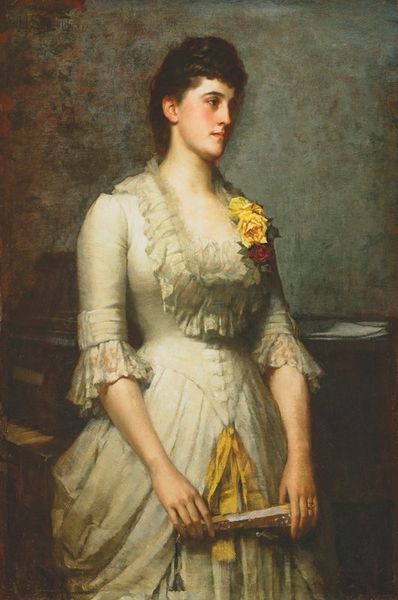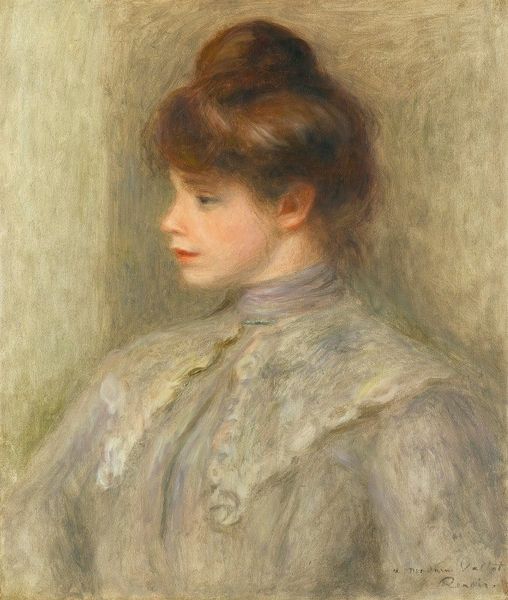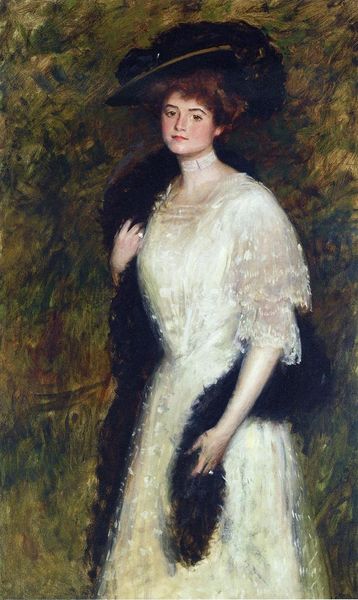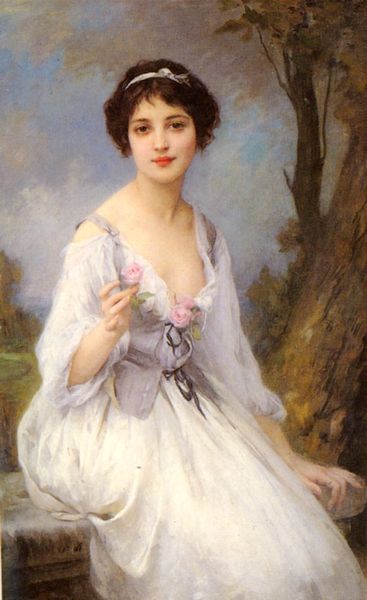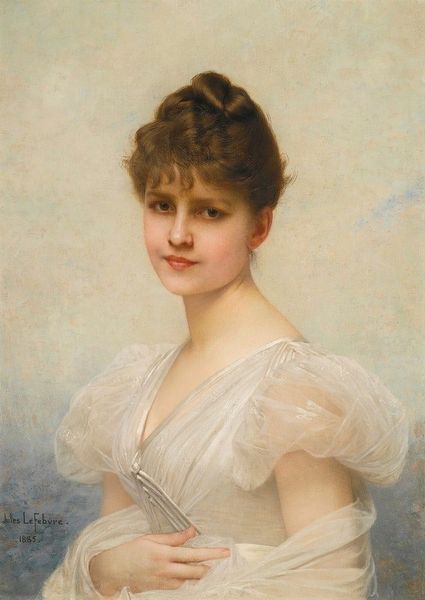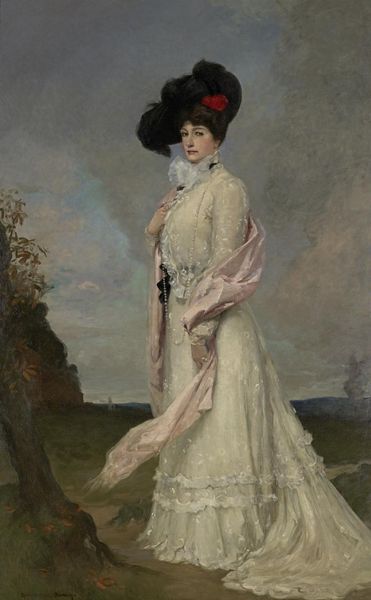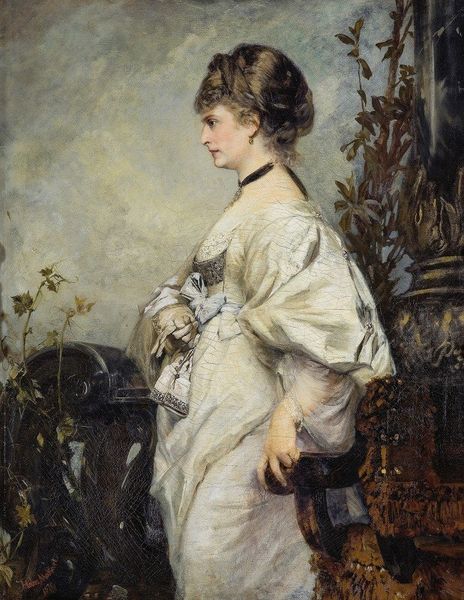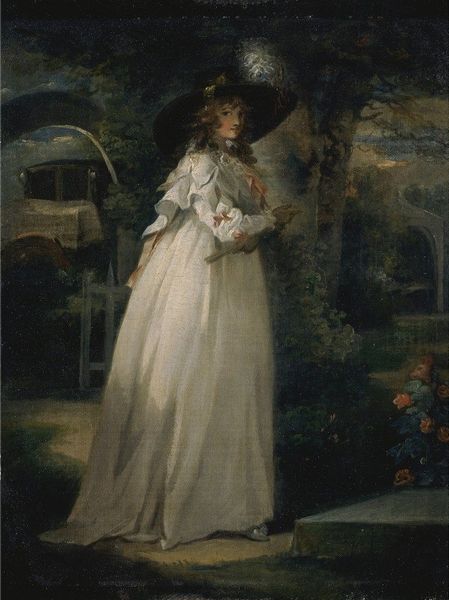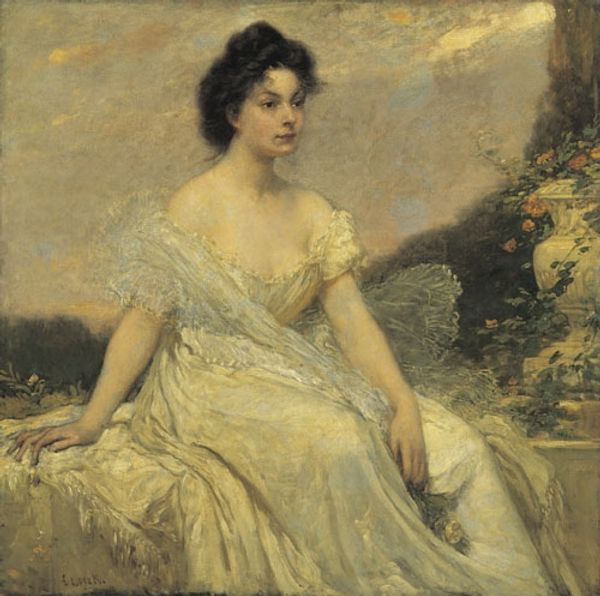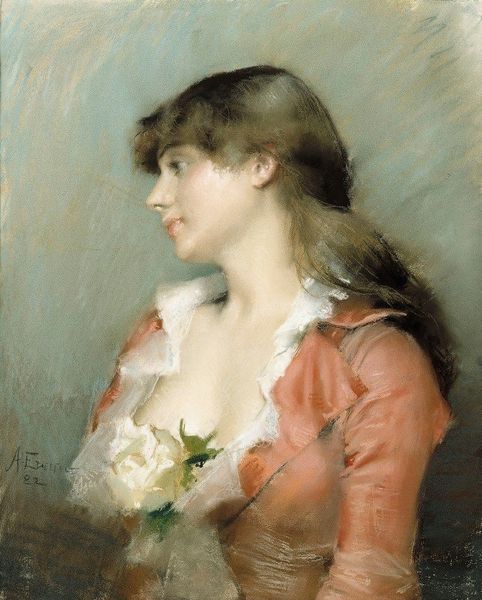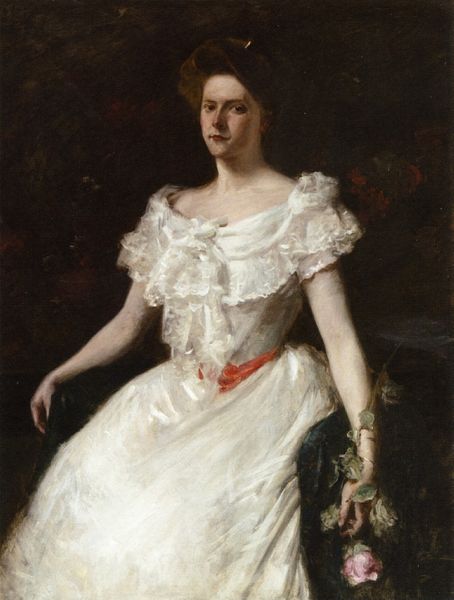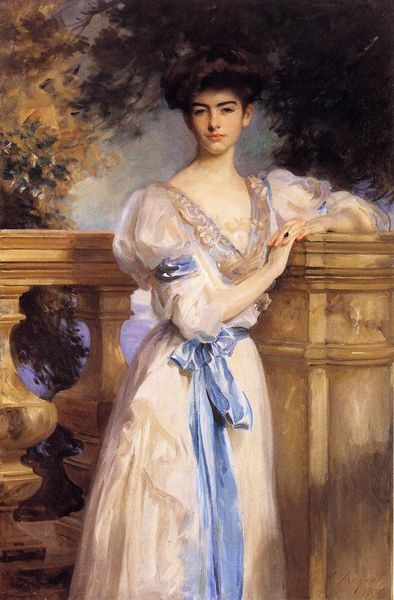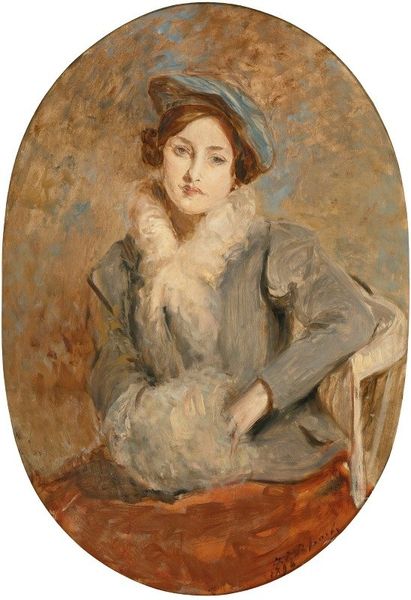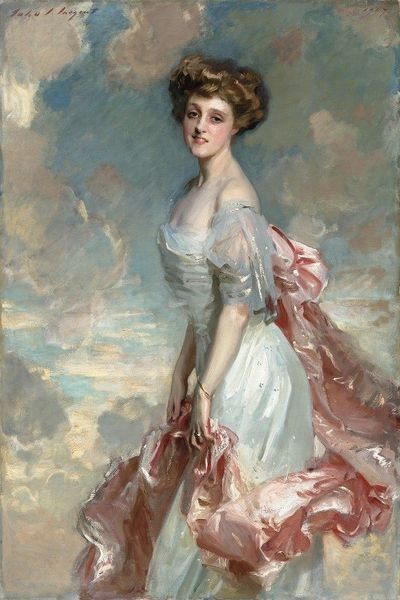
Copyright: Public domain
Editor: This is Károly Lotz’s “Spring (portrait of Ilona Lippich),” painted in 1894, using oil on canvas. I’m struck by the woman’s white dress, how its ruffled texture seems to contrast with the smooth handling of the sky. What do you see in how Lotz renders material in this piece? Curator: Focusing on the materiality, consider the economic realities intertwined with paint production in 1894. What pigments were newly available? How would their cost influence Lotz’s palette? And what about the linen itself – where was it sourced? Thinking about the materials brings forth questions about labour, both Lotz's and those further down the supply chain. Editor: So you’re saying the seemingly simple choice of, say, a white dress opens up a whole can of worms about material sourcing and labor practices? It definitely makes you think about what went into producing even something that appears straightforward. Curator: Precisely! The layers of ruffles may speak to trends of high society but, on another note, let’s consider the physical act of rendering those ruffles. What repetitive movements were demanded? Is there a connection between those production efforts, the labour implied within the artwork, and the labor outside of the work? Does thinking about it differently allow one to expand and enrich the notion of romanticism here? Editor: That's fascinating. I'd never thought about linking the act of painting so directly to the social context. Now I’m seeing new depths in this portrait, layers beyond just its aesthetic beauty. Curator: And that beauty is, of course, inseparable from the economic and material conditions that birthed it. Perhaps thinking through these different notions and labor brings up new insights and new spring blossoms. Editor: Absolutely! It highlights the interconnectedness of art, labor, and societal structures, something I will consider moving forward.
Comments
No comments
Be the first to comment and join the conversation on the ultimate creative platform.
